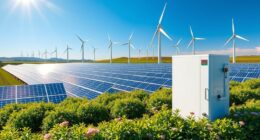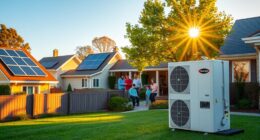Are you fed up with expensive energy bills and the negative impact on the environment? We have the perfect solution for you!
In this article, we’ll show you how to harness heat pump technology to create green buildings that not only save you money but also help protect our planet.
With our step-by-step guide, you’ll understand how heat pump technology works and learn key considerations for implementing it in your own green building.
Get ready to serve the environment and your wallet with this game-changing technology.

Key Takeaways
- Reduction in energy consumption
- Highly efficient transfer of heat
- Utilizing existing heat in the environment
- Integration with energy-efficient systems
The Environmental Benefits of Heat Pump Technology in Green Buildings
We believe that heat pump technology offers significant environmental advantages in green buildings. One of the key benefits is the reduction in energy consumption. Heat pumps are highly efficient, allowing for the transfer of heat from one area to another, rather than generating heat from scratch. This means that they require much less energy to operate compared to traditional heating and cooling systems.
By utilizing heat pump technology, green buildings can achieve substantial energy savings, resulting in reduced greenhouse gas emissions and a smaller carbon footprint. Another advantage is the integration of renewable energy sources. Heat pumps can be powered by electricity generated from renewable sources such as solar or wind energy. This further enhances the sustainability of green buildings and contributes to a cleaner and greener future.
Understanding how heat pump technology works for energy efficiency is crucial in maximizing its environmental benefits.
Understanding How Heat Pump Technology Works for Energy Efficiency
To fully grasp the energy-efficient benefits of heat pump technology, it’s important to understand how it operates and how it enhances the efficiency of green buildings. Heat pumps work by transferring heat from one area to another, using a small amount of energy to move a large amount of heat. This process makes them highly efficient in terms of energy savings.
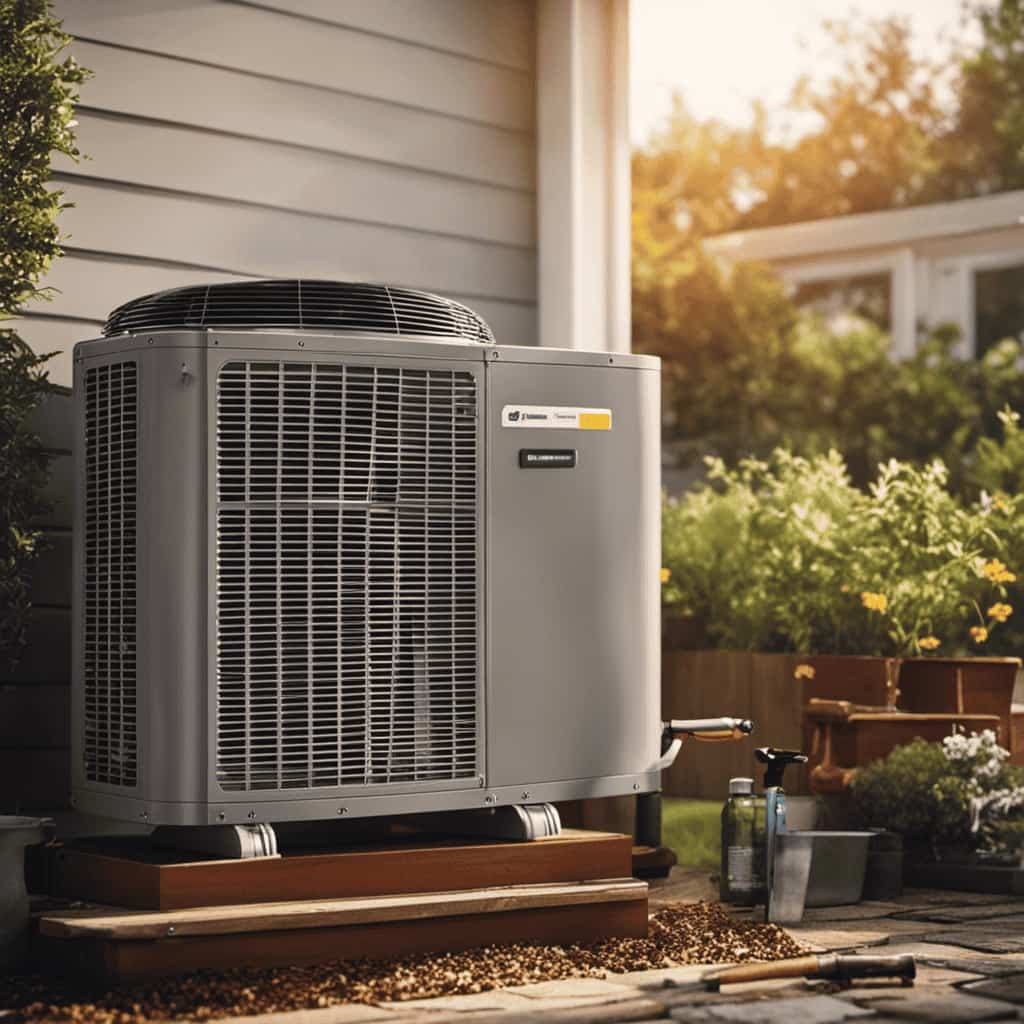
Here’s how heat pump technology works for energy efficiency:
- Heat pumps extract heat from the air, ground, or water sources, making use of renewable heating options.
- The extracted heat is then compressed and transferred to the desired area, such as a building or water system.
- By utilizing the existing heat in the environment, heat pumps significantly reduce the need for traditional heating methods, resulting in lower energy consumption and reduced carbon emissions.
Understanding how heat pump technology operates and its ability to harness renewable heating sources is essential for achieving energy efficiency and creating sustainable green buildings.
Key Considerations for Implementing Heat Pump Technology in Green Buildings
When implementing heat pump technology in green buildings, there are several key considerations to keep in mind.
One of the main factors to consider is energy consumption. Heat pumps are known for their energy efficiency, but it’s important to assess the specific needs of the building and choose the right size and type of heat pump accordingly.
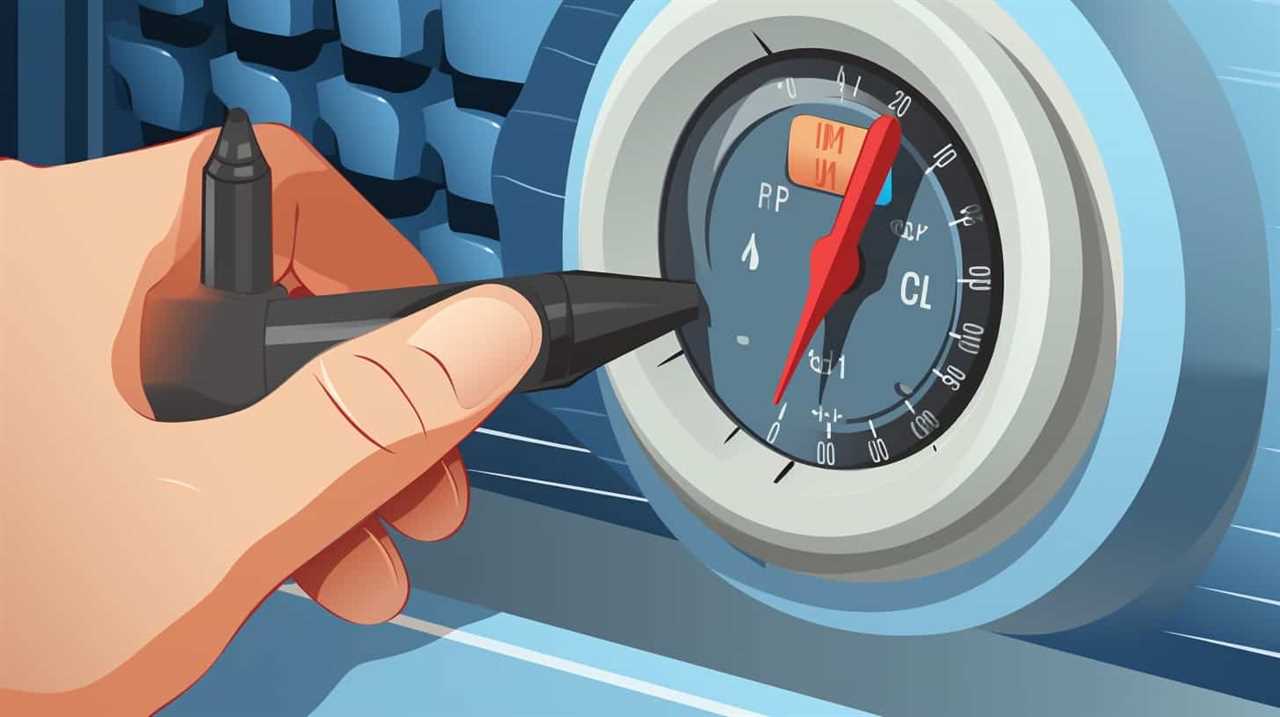
Additionally, when implementing heat pumps in green buildings, it’s crucial to integrate renewable energy sources. This can include solar panels or wind turbines to power the heat pump system, further reducing the reliance on fossil fuels.
Maximizing Savings With Heat Pump Technology in Green Buildings
In order to maximize savings, it’s essential to strategically utilize heat pump technology in green buildings. By focusing on cost-effective implementation and achieving optimal comfort levels, we can ensure that these buildings aren’t only energy-efficient but also provide a comfortable environment for their occupants.
To achieve cost-effective implementation of heat pump technology in green buildings, consider the following:
- Proper sizing and selection of heat pumps to match the building’s heating and cooling demands
- Integration with other energy-efficient systems, such as insulation and smart controls, to optimize overall building performance
- Regular maintenance and monitoring to ensure efficient operation and identify any potential issues early on
Furthermore, achieving optimal comfort levels with heat pump technology in green buildings involves:
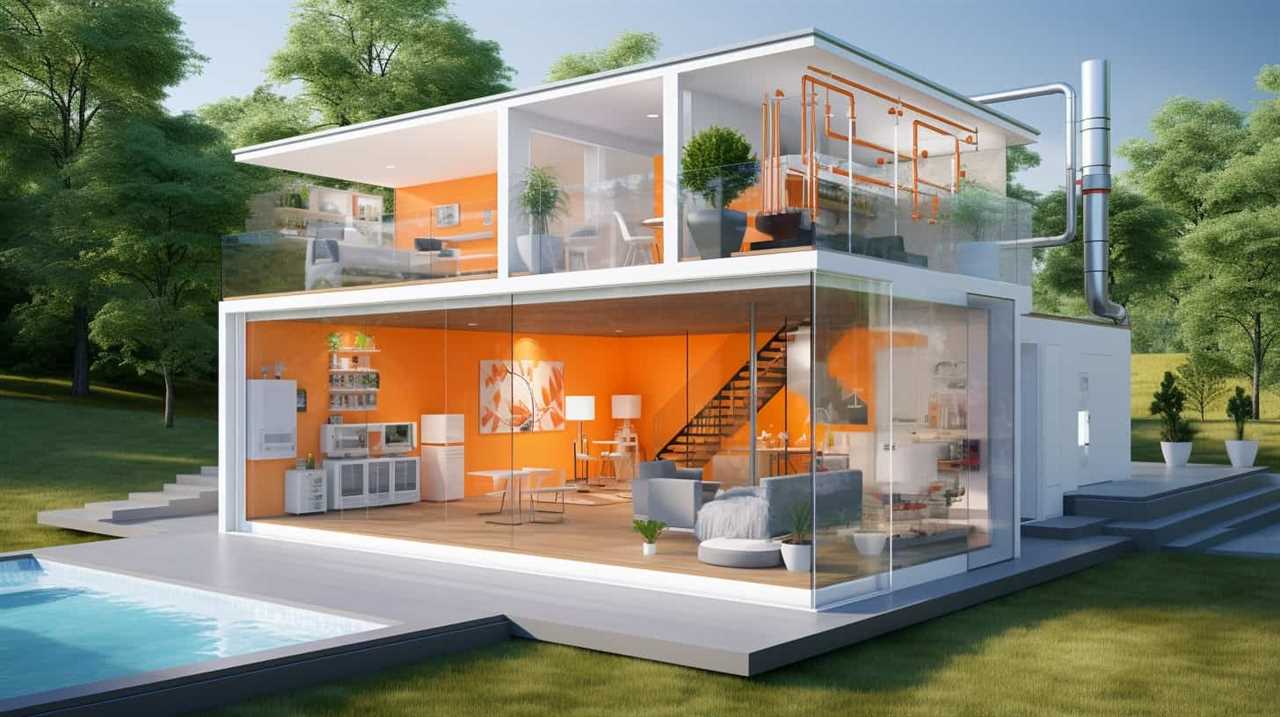
- Proper zoning and distribution of heat pumps to ensure consistent temperatures throughout the building
- Adjusting settings and controls to meet individual preferences and occupancy patterns
- Providing adequate ventilation and air quality management to enhance indoor comfort
By strategically implementing heat pump technology and considering cost-effectiveness and optimal comfort, green buildings can maximize savings while serving the needs of their occupants.
Now, let’s explore some case studies showcasing successful applications of heat pump technology in green buildings.
Case Studies: Successful Applications of Heat Pump Technology in Green Buildings
We frequently observe successful applications of heat pump technology in green buildings through various case studies. These case studies provide valuable insights into how heat pump systems can effectively reduce energy consumption and improve cost effectiveness in sustainable buildings.
Here are three examples of successful applications of heat pump technology in green buildings:
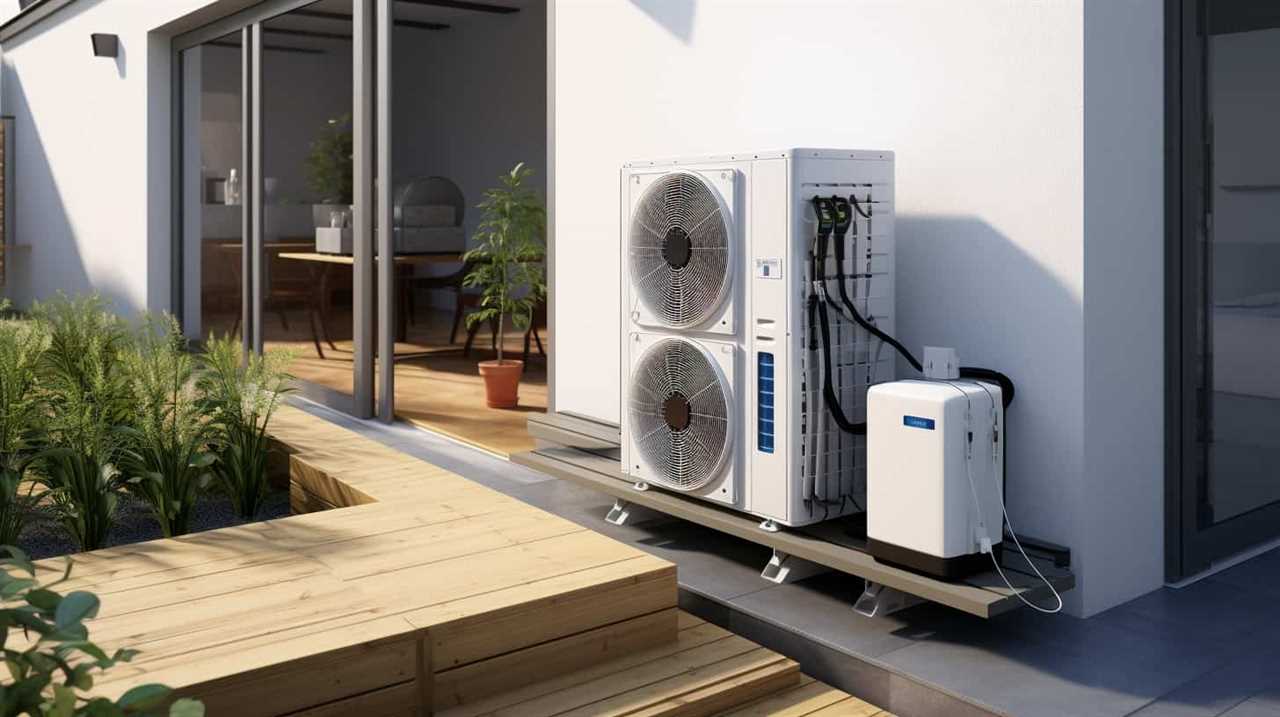
| Case Study | Energy Consumption | Cost Effectiveness |
|---|---|---|
| Case 1 | Significant reduction in energy consumption by utilizing heat pumps for both heating and cooling purposes. | Cost savings achieved through lower energy bills and decreased maintenance and repair costs. |
| Case 2 | Substantial decrease in energy consumption by using heat pumps for space heating and hot water production. | Cost effectiveness demonstrated by reduced energy expenses and lower carbon emissions. |
| Case 3 | Drastic reduction in energy consumption through the integration of ground source heat pumps for heating and cooling needs. | Cost savings realized by reducing reliance on traditional heating and cooling systems and lowering operational expenses. |
These case studies highlight the positive impact of heat pump technology on energy consumption and cost effectiveness in green buildings. By implementing heat pump systems, building owners can achieve significant energy savings while also contributing to a more sustainable future.
Frequently Asked Questions
What Are the Maintenance Requirements for Heat Pump Technology in Green Buildings?
Maintenance requirements for heat pump technology in green buildings include regular filter cleaning, refrigerant level checks, and inspection of electrical connections. Efficiency considerations involve monitoring energy usage and scheduling professional tune-ups to ensure optimal performance and minimize environmental impact.
Are There Any Government Incentives or Rebates Available for Implementing Heat Pump Technology in Green Buildings?
Yes, there are government incentives and rebates available for implementing heat pump technology in green buildings. These incentives aim to promote energy savings and support the transition to more sustainable and efficient heating and cooling solutions.
Can Heat Pump Technology Be Used in All Types of Green Buildings, Regardless of Size or Location?
Heat pump technology applications vary according to the size and location of green buildings. Nonetheless, the efficiency of heat pump technology allows it to be utilized in all types of green buildings.

How Does the Cost of Installing Heat Pump Technology Compare to Other Heating and Cooling Systems in Green Buildings?
When it comes to the cost comparison of heat pump technology in green buildings, we’ve found that it’s often more affordable than other heating and cooling systems. Plus, it has a lower environmental impact.
Are There Any Limitations or Drawbacks to Using Heat Pump Technology in Green Buildings?
Limitations of heat pump technology in green buildings include performance evaluation and potential drawbacks. However, we strive to address these concerns and provide efficient and sustainable solutions for our audience who prioritize serving others.
Conclusion
As we wrap up our journey into the world of heat pump technology for green buildings, we can’t help but feel a warm and hopeful glow. Like the steady flow of heat through the pump, this technology offers us a sustainable path towards a greener future.
By harnessing its power, we can reduce our carbon footprint and create buildings that aren’t only energy-efficient, but also symbolize our commitment to a healthier planet.

Let’s embrace this technology and watch as our buildings become beacons of sustainability.






